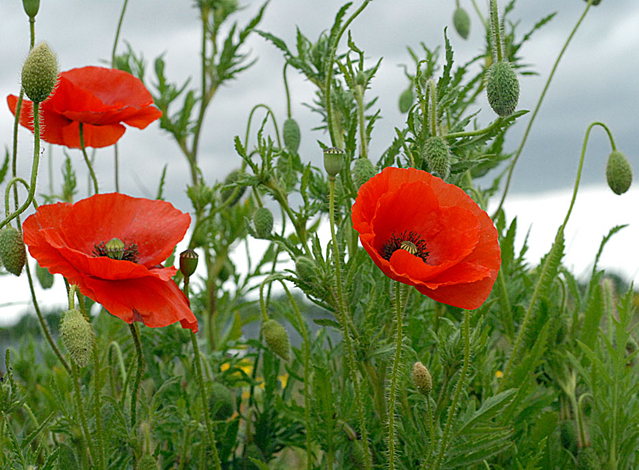Papaver rhoeas Common Poppy I

This is the cornfield poppy (also known as Corn Poppy) which gives that splash of red against the yellow ripening crop and looks so good. The other common poppy is P. dubium (Long-headed Poppy) but that is distinctly a paler more towards the orange shade of red. The seed head is also a quite different shape. This plant is very common as its name suggests and you find it in many different habitats. It does seem to be one of those plants where the seed bank stays viable for a long time and which germinates when disturbed. In the first summer after the M1 link north from the M62 was finished, the recently built embankments were crowded with thousands of P. rhoeas which diminished to a tenth of their numbers the following year and now are hardly seen at all.
In spite of the much publicised gloom about herbicides making mono cultures of our common crops it is still possible to see fields of wheat, barley or oats in which Papaver rhoeas gives a stunning splash of red.
P. rhoeas is still very common throughout England, Wales and eastern and central Ireland but records thin out as you go north into Scotland where most records are from the east.
When New Flora of the British Isles was first published in 1991 (Edition 1) Papaver rhoeas was thought to be native but by the third edition (2010), it was considered to be an Archeophyte i.e. introduced to the British Isles but before 1500 A.D.
Near Shotton, North Wales, 7th May 2007
Added on 1st May 2005, updated 7th February 2011, updated 28th July 2023





